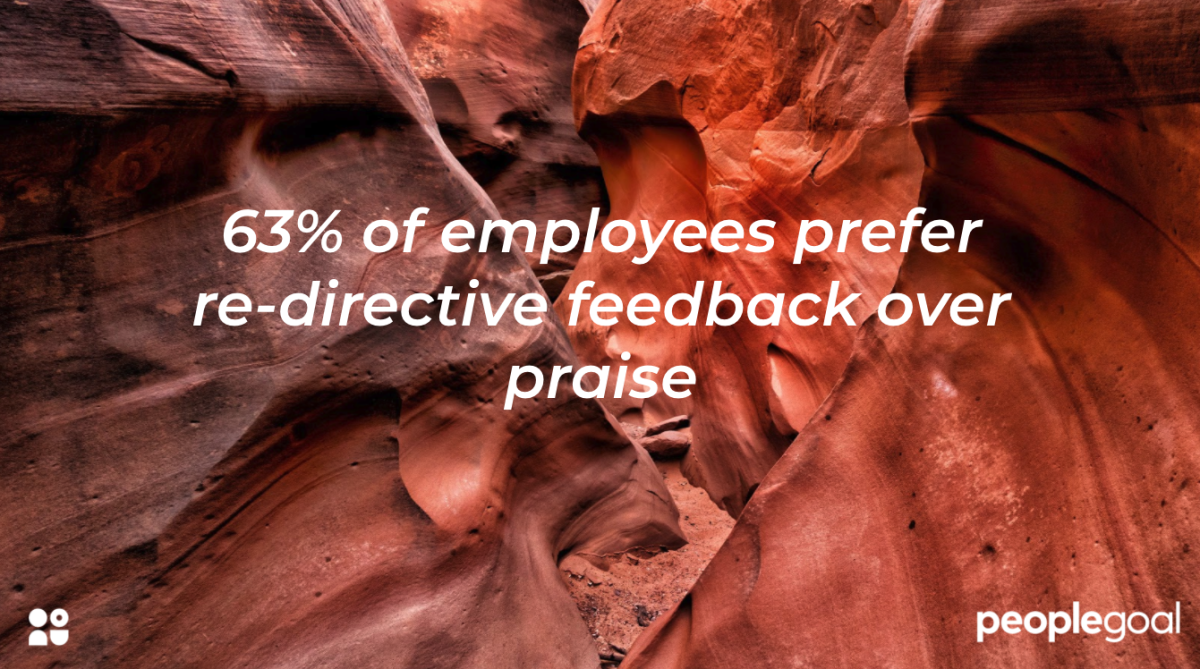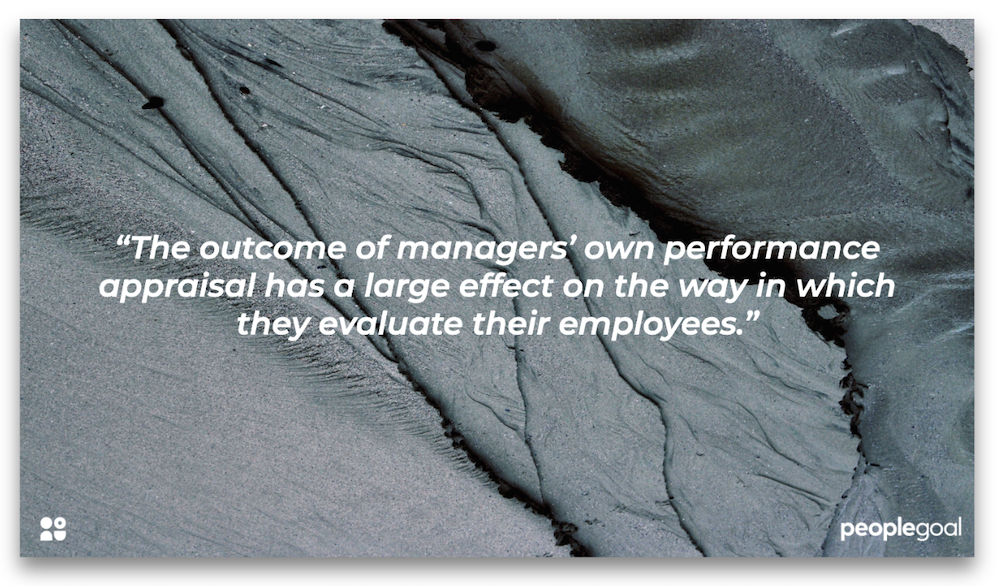If the “performance appraisal process” had a fan club, I don’t think we would have joined.
Why? 🤔
Because, between the awkward silences, the last-minute writing marathons, and phrases like “meets expectations,” most appraisal processes feel boring. But it doesn’t have to be that way.
As an HR strategy consultant for the last 12 years, I’ve helped companies untangle their messy review systems, redesign performance conversations from the ground up, and turn vague feedback into real development plans. And trust me, it’s fixable.
In this guide, I’ll show you:
- What a great process of performance appraisal actually looks like ✅
- What not to do (unless you want chaos and confusion) ⚠️
- How to use performance appraisal tools to make things smoother 🛠️
By the end, you’ll have a process that saves time, builds trust, and improves performance.
But before that, here’s a quick video I recorded to help you conduct effective performance reviews:
What Is the Performance Appraisal Process?
The performance appraisal process is a structured way of evaluating an employee’s performance against expectations over a set period, typically quarterly or annually. It’s not just about checking goals off a list; it’s how you identify top performers, spot employee development gaps, and call for raises or promotions. When done right, it drives accountability and growth.
But here’s the kicker: according to a study, only 14% of employees say performance reviews motivate them to improve.
So if your process feels like a formality, it’s time to rework it into a meaningful, two-way conversation with real impact.
Traditional Performance Appraisals vs Modern Performance Appraisals
Traditional appraisals often feel like annual rituals filled with awkward silences, outdated criteria, and rushed feedback. Modern systems, on the other hand, are faster, fairer, and far more engaging for both you and your team.
Here’s a side-by-side comparison to help you spot where you might still be running an outdated playbook:
| Aspect | Traditional Appraisals | Modern Appraisals |
|---|---|---|
| Frequency | Annual or semi-annual only | Ongoing check-ins with weekly, quarterly, or monthly reviews, apart from annual |
| Feedback Style | Top-down, one-way, mostly | Two-way dialogue with employee input |
| Purpose | Focused on past performance and salary decisions | Balanced focus on past, present, and future development |
| Criteria | Often vague or generic | Role-specific, goal-oriented, and aligned with company strategy |
| Documentation | Heavy paperwork, often filed and forgotten | Lightweight, digital, and continuously updated |
| Bias Risk | High; relies on the manager’s memory and subjectivity | Reduced—uses real-time data, peer input, and structured scoring |
| Employee Experience | Stressful, demotivating, and often seen as unfair | Supportive, collaborative, and geared toward growth |
| Timing of Feedback | Delayed, sometimes months after events occur | Immediate or near-real-time |
| Link to Development | Rarely includes actionable next steps | Tied directly to training, mentoring, and career pathing |
| Technology Use | Limited or manual | Automated, cloud-based tools with performance analytics |
Who Uses Performance Appraisals and Why?
If you’re designing or overseeing a process of performance appraisal, this part is for you. Appraisals aren’t just an HR formality; they’re strategic tools used by people at every level of management to make informed decisions, drive accountability, and guide growth.
So, who actually uses performance appraisals? Well,
- HR professionals use them to ensure consistency, compliance, and fairness across teams.
- Team leads, and managers use them to evaluate contributions, give meaningful feedback, and allocate promotions or raises.
- Business owners and department heads rely on them to spot high-potential talent, address underperformance early, and align individual output with business goals.
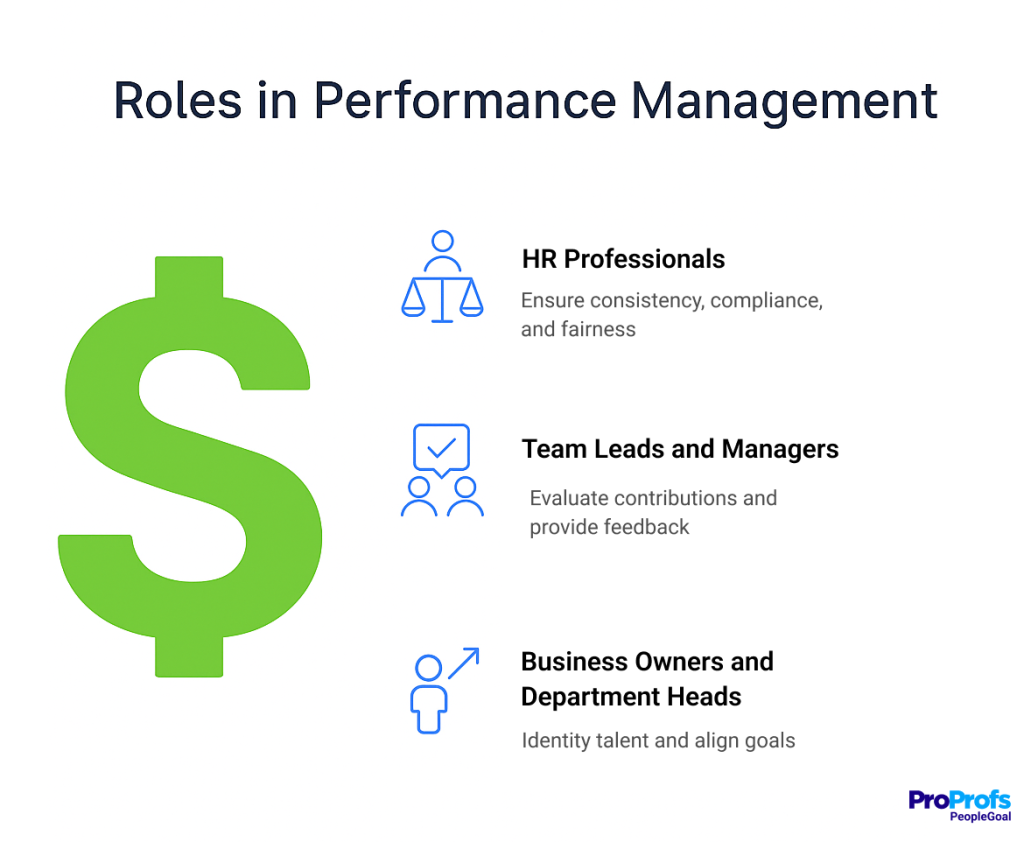
The goal is to create a high-performance culture where everyone knows what’s expected and how they’re doing.
Let’s break it down with a few realistic examples:
- Scenario 1:
You’re an HR manager in a 100-person company. Your challenge is standardizing the appraisal process across teams with wildly different KPIs. You implement quarterly reviews with role-based scorecards.
The result: Managers report a 30% improvement in clarity when reviewing performance, and employee satisfaction scores with the performance review process increase by 18% within two cycles.
- Scenario 2:
You’re a team lead in a tech startup. Your developers hate the traditional once-a-year reviews. You switch to monthly one-on-ones with templates and track goals in a shared dashboard.
Within three months, missed deadlines drop by 22%, and peer feedback submissions triple, giving you more insight to work with.
And here’s a stat to put things into perspective: According to a report, companies with regular performance conversations are 39% more likely to retain top talent. Why? Because people don’t leave jobs where they feel seen, heard, and coached.
So, if you’re thinking appraisals are “just HR’s job,” think again. They’re your tool to reduce turnover, develop future leaders, and keep performance aligned with your vision, no matter what role you’re in.
How to Set Up a Performance Appraisal Process
A well-structured performance appraisal process isn’t just about evaluations; it’s about creating a culture of growth, accountability, and fairness.
Whether you’re leading HR or managing a team, these performance appraisal steps will help you build a modern, scalable system that is respected by everyone involved.
Step 1: Clarify the Purpose and Scope
Before anything else, clarify why you’re conducting performance appraisals.
Is it to decide raises and promotions? Drive development? Improve alignment? Your goals shape everything from frequency to format.
Also, define the scope: Who will be reviewed? Who will review them? Will it include peer or 360° feedback?
Example: A growing consulting firm realized its reviews were too focused on financial metrics. After redefining the purpose to include leadership development, it expanded the process to evaluate mentoring, collaboration, and innovation, boosting cross-team satisfaction scores by 21%.
Step 2: Choose the Right Evaluation Framework
Select an appraisal method that reflects your company’s values and pace. Popular options include:
- Rating scales for structured scoring
- Narrative reviews for qualitative insight
- MBO (Management by Objectives) for results-focused roles
- 360-degree reviews for leadership and cross-functional roles
Whatever you choose, mix quantitative KPIs (e.g., closed deals, resolved tickets) with qualitative traits (e.g., problem-solving, adaptability).
Example: A product team blended BARS (behaviorally anchored rating scales) with goal tracking. The structured feedback helped junior PMs understand exactly how to improve, and reduced manager-reviewer disagreements by 37%.
Step 3: Define Clear Performance Criteria
Vague expectations kill fairness. Every role should have tailored performance standards aligned with company goals. These might include:
- Deliverables (projects completed, client feedback)
- Behaviors (collaboration, ownership, decision-making)
- Progress on goals (OKRs or KPIs)
Example: A nonprofit linked performance criteria to impact metrics, such as donor retention and campaign reach. As a result, appraisals felt more relevant to day-to-day work, and review completion rates jumped from 64% to 95% in one cycle.
Step 4: Set the Right Frequency and Timeline
Annual reviews are outdated in most fast-moving environments.
Shift toward quarterly or biannual reviews supported by monthly check-ins. Also, create a timeline for:
- Self-assessments
- Manager reviews
- Calibration (if needed)
- Feedback conversations
Example: A logistics company switched to quarterly appraisals with short monthly check-ins. This helped managers catch underperformance early and cut delivery errors by 18% in six months.
Step 5: Build the Templates and Toolkits
Your review forms should be simple, structured, and clear. Include:
- Goal tracking
- Competency rating scales
- Open fields for comments
- Development plans
Support it with manager guides, rating rubrics, and sample responses.
Example: A SaaS startup added a “Future Focus” section in their templates to prompt goal-setting. Managers said it made conversations 2x more constructive, and employee engagement scores rose the following quarter.
Step 6: Train and Prepare Managers
Even the best-designed system fails if managers aren’t equipped to use it. Train them on:
- Giving actionable, unbiased feedback
- Avoiding rating errors (recency, halo/horns, central tendency)
- Facilitating two-way discussions
- Setting follow-up development goals
Example: One global team ran a 90-minute calibration and feedback training before the review season. HR later found that 86% of reviews contained at least one detailed development recommendation, up from just 42% the previous year.
Step 7: Launch, Communicate, and Improve
Roll out the process with a clear internal campaign: explain the “why,” the timeline, and the expectations. After each cycle, gather feedback from both employees and managers. Adjust templates, criteria, or training based on what’s working (or not).
Example: A media company embedded short anonymous pulse surveys after each review cycle. One round revealed confusion over a new competency scale, so they revised it, and clarity scores jumped by 31% the next quarter.
Sounds good?
Here’s a quick video that would help you get going quicker:
How to Carry Out the Performance Appraisal Process With Online Tools
Running performance appraisals no longer has to be a time-consuming, manual process. With the rise of intuitive performance management platforms, companies can now automate workflows, streamline feedback collection, and ensure consistency across teams.
These tools simplify everything from setup to reporting, no coding or spreadsheets required. To show you how easy it can be, I’m using PeopleGoal as the example.
Step 1: Set Up a Ready-to-Use Template
Install a pre-built performance review template from the PeopleGoal App Store. It comes with default criteria, stages, and workflows, ready to launch out of the box.
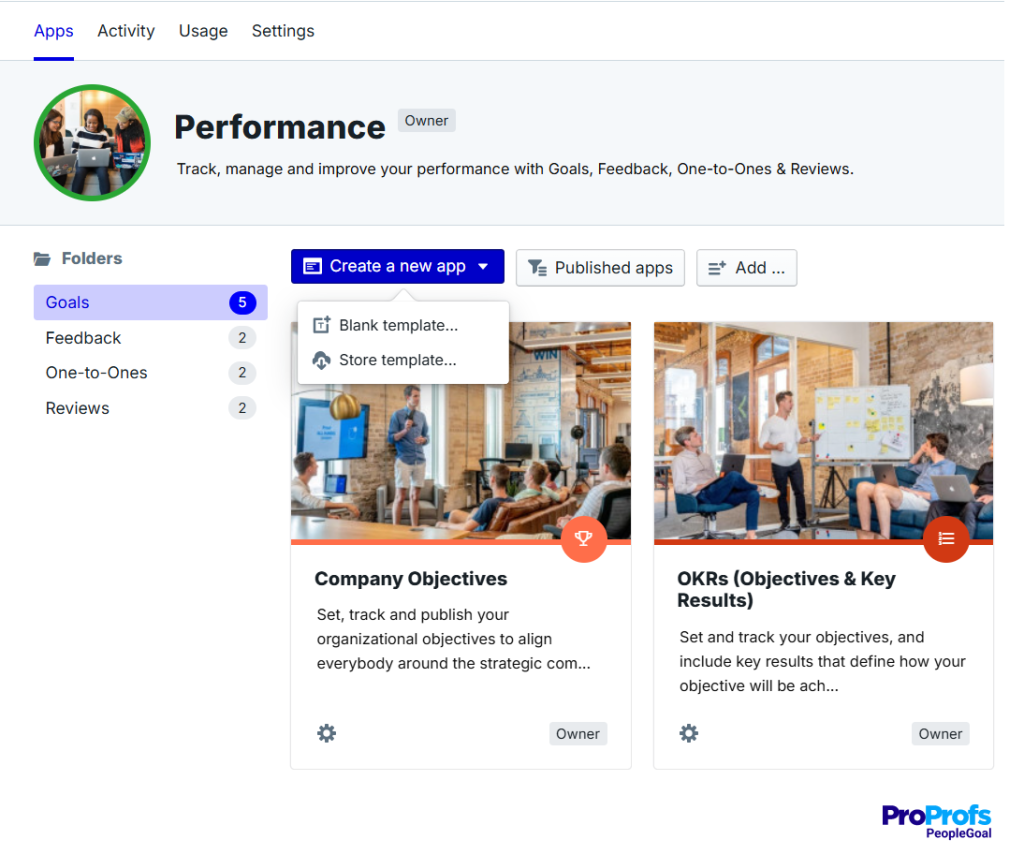
Step 2: Assign Roles and Set Visibility
Decide who’s involved, employees, managers, HR, and control who sees what at each stage of the appraisal. Assign visibility levels to keep feedback clear and confidential.
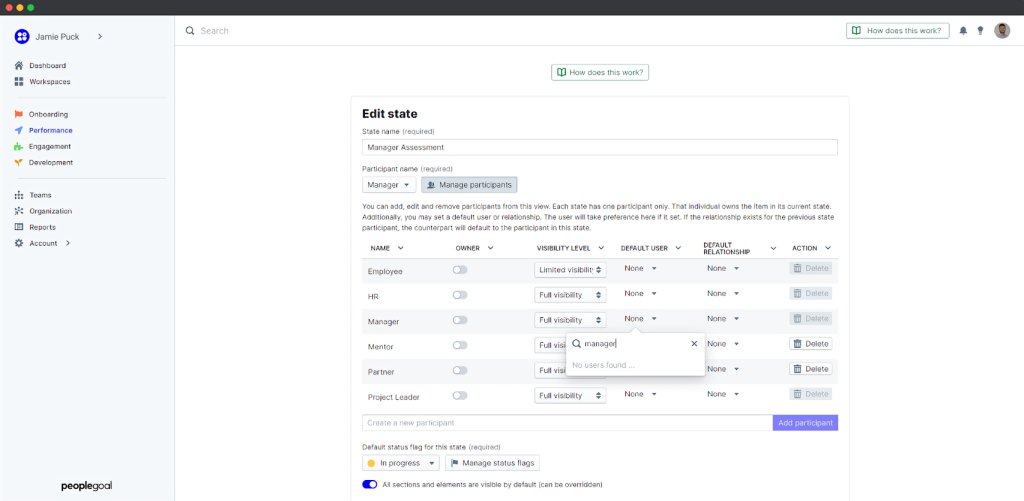
Step 3: Customize Your Review Workflow
Use drag-and-drop states to create a smooth appraisal flow, like self-assessment, manager evaluation, and HR sign-off. Set each state’s permissions in just a few clicks.
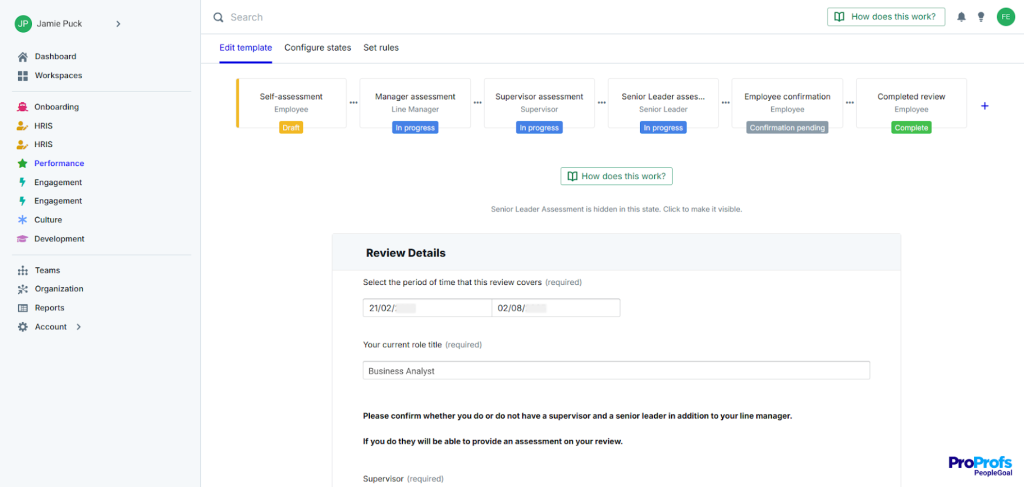
Step 4: Set Access Permissions and Launch
Control who can create, view, or edit appraisals across teams. Launch them in bulk or one at a time, based on users or entire departments.
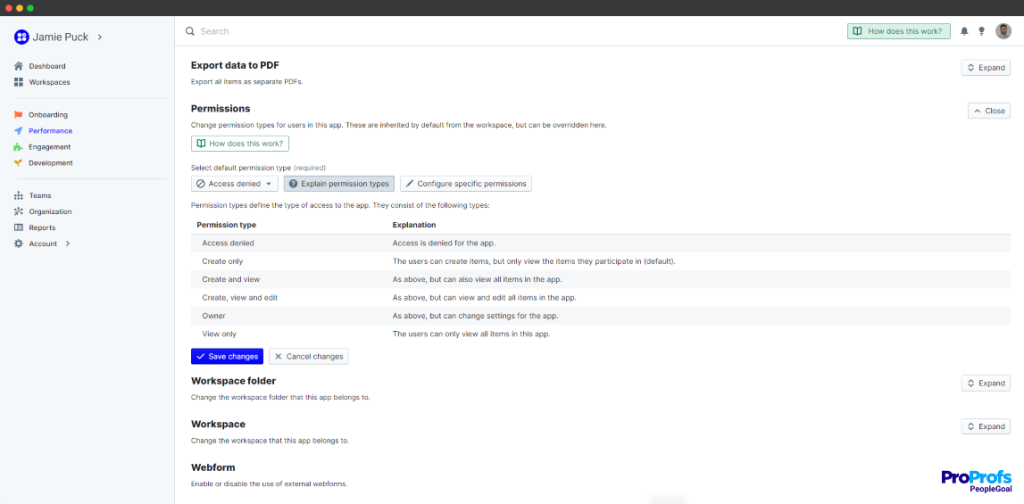
Step 5: Track Progress and Build Reports
Monitor appraisal completion in real time and generate custom reports to analyze trends, performance scores, and feedback insights across the organization.
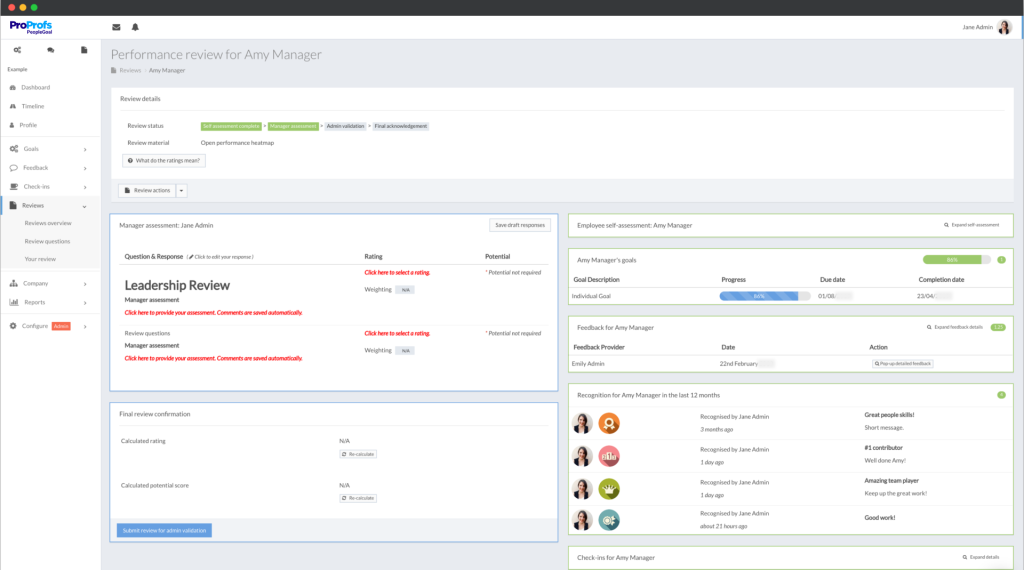
And that’s it!
It’s easy to create an online performance management appraisal process, and it requires no tech, no development, minimal effort, and minimal time.
But how do you select a performance management tool that really helps? Here’s a quick video to help you get started:
Want to Create a Performance Appraisal System That Works?
Best Practices to Build a Performance Appraisal System
Let’s be honest. You know there’s room for improvement if you’ve ever sat through a performance appraisal that felt like an awkward monologue or a glorified form-filling exercise.
As someone who’s helped shape a few too many of these, I can tell you that appraisals don’t have to be stiff or dreaded. When done right, they become some of the most meaningful conversations you’ll have with your team.
So if you’re in charge of building or revamping your process, here are the best practices that can really help:
1. Make Feedback Frequent, Not Annual
If you’re still treating employee feedback like a once-a-year grand reveal, I urge you to stop. You and I both know that memory fades, frustrations pile up, and achievements get lost in the shuffle when you wait twelve months to speak up.
What works better is building a rhythm of regular conversations. Monthly check-ins or quarterly pulse reviews keep feedback flowing. When formal appraisal time rolls around, it feels more like a recap than a reckoning.
Let’s understand this with an example: I once worked with a designer who was brilliant creatively, but always late delivering assets. We didn’t wait until the end of the year to bring it up. Instead, we addressed it in one of our regular one-on-ones and made small process tweaks. Within a month, he was on track. By the time we hit his appraisal, we were reflecting on his turnaround, not rehashing old frustrations.
2. Align Appraisal Criteria With Company Goals and Culture
You can’t just evaluate people based on “Meets Expectations” and hope they understand what that means. If your appraisal criteria aren’t tied to what your company actually cares about, you’re sending mixed signals. And trust me, your team can tell.
Ask yourself what behaviors fuel your success. What values do you expect to see every day?
Then make sure those show up in the way you assess performance. This helps your team understand what matters and how to hit the target.
Let’s take an example: Imagine you’re leading a support team and the company starts prioritizing customer experience over speed. You update your appraisal template to include customer empathy and first-call resolution, not just tickets closed. One of your agents, previously overlooked, starts getting recognized for calming down angry clients. Suddenly, your reviews reinforce exactly the kind of performance you want more of.
3. Include Multiple Perspectives Through 360-Degree Input
Look, as a manager, I’m the first to admit I don’t see everything. You probably don’t either. That’s why bringing in multiple voices makes your appraisals smarter, fairer, and more grounded in reality.

Peers, cross-functional leads, and even direct reports can offer context you’d otherwise miss. You don’t need a 14-person feedback panel. Just include a few key inputs to round out your view. It’s like seeing your team in full color instead of blurry black and white.
Let’s understand this with an example: Say you’ve got a project manager who quietly keeps everything running but never brags about it. Peer feedback reveals she’s the glue holding cross-functional teams together, solving conflicts behind the scenes. Without that input, her impact might have gone unnoticed. With it, you recognize a leader in the making.
4. Separate Development Conversations From Compensation Discussions
Here’s a truth you learn the hard way. Once you mention bonuses or salary, nobody hears another word about their communication style or growth plan. That’s why I separate development and compensation into two conversations, and I suggest you do the same.
In the first meeting, focus entirely on strengths, feedback, and where the person is headed. Let them absorb it. Then, later, ideally with HR present, talk about compensation. Two meetings, two mindsets. It keeps both cleaner and more productive.
Let’s take an example: A colleague of mine runs what she calls “Future You” meetings. These are purely about career goals, feedback, and skill-building. A few days later comes the pay discussion. The result is that her team walks into compensation talks with clarity and comes to the growth discussion more open, less guarded, and far more engaged.
5. Train Managers to Give Better, Bias-Free Feedback
If you’ve ever read a review that said “John is great,” and that was it, you already know why manager training matters.
I’ve seen incredible people get vague, generic, or biased feedback, not because their manager didn’t care, but because they didn’t know how to do better.
You need to teach managers how to track performance regularly, avoid rating traps, and give feedback that’s specific and useful. Sometimes you also need to show them what not to say and why it matters.
Let’s understand this with an example: One year, I ran a simple training where we dissected fake reviews. Some were too soft, some were far too harsh, and others were hilariously inconsistent. After that session, our appraisals improved almost immediately. Managers wrote clearer, fairer reviews, and feedback conversations started to feel like real coaching sessions.
6. Use Technology to Track, Streamline, and Analyze Appraisals
If your performance reviews live in scattered folders and email chains, you’re not running a system. You’re running a scavenger hunt. I’ve been there, and it’s exhausting.
Use a performance management tool that brings everything into one place. Automate workflows, track participation, and generate reports without hours of spreadsheet pain. Your HR team, your managers, and your own sanity will benefit.

Let’s take an example: At one company, we moved to a platform where reviewers could log feedback, update goals, and complete appraisals without jumping between tools. HR used the dashboard to spot incomplete reviews and trend data across teams. What used to be two weeks of admin work was suddenly done in hours, and we actually had data we could use in leadership meetings.
7. End Every Appraisal With a Forward-Looking Plan
You can give the most thoughtful, nuanced feedback, but if the conversation ends with “Keep doing what you’re doing,” you’ve missed the best part. People want direction, not just a pat on the back.
I always end performance conversations by co-creating a simple, specific action plan. It might be a new skill to learn, a leadership opportunity, or a measurable goal for the next 90 days. If nothing gets written down, nothing gets done.
Here’s an example: After one appraisal, I sat with a junior engineer who wanted to grow into a team lead role. We outlined two clear goals: He’d co-lead the next client sprint and take a short course on stakeholder communication. Three months later, he nailed both. His confidence soared, and his peers started turning to him for help. That never would have happened if our review had ended with, “You’re doing great, keep it up.”
Okay, now that we know the best practices, it’s also important to understand how not to do performance appraisals.
What to Avoid: How Not to Do Performance Appraisals
Let’s flip the script for a moment.
You’ve got your appraisal system up and running. The templates are built, the timelines are clear, and the meetings are booked. Great.
But even with all that, it’s incredibly easy to fall into habits that quietly ruin the entire process. These aren’t dramatic mistakes; they’re subtle, easy-to-miss missteps that slowly chip away at trust, clarity, and impact.
Here’s what you’ll want to avoid if you wish to your appraisals to feel like leadership tools, not just HR paperwork.
1. Don’t Make It a Last-Minute Scramble
If you’re writing appraisals at 11 PM the night before they’re due, you already know how this one goes. Rushed reviews feel generic, lack substance, and come across as more of a chore than a meaningful reflection.
When you treat the appraisal like a box to check, your team will too. They can tell when it’s copy-pasted or written in one breathless sitting.
Avoid it by blocking time in advance, reviewing performance notes regularly, and treating this like the leadership responsibility it is, not a surprise assignment.
2. Don’t Rely on Memory Alone
You might think you remember everything your team did this year, but unless you’ve got a photographic memory or a secret diary, you’re missing things. The risk? You’ll either be overweight in the last few weeks or latch onto one standout event, good or bad.
This creates unbalanced appraisals that either ignore long-term patterns or glorify one-time wins.
Avoid it by capturing small wins and challenges throughout the year. They don’t have to be essays. A few bullet points in your manager’s notes can work wonders.
3. Don’t Turn It Into a Monologue
You may have all the data, insights, and observations ready, but if you’re the only one talking during the performance appraisal, you’re doing it wrong. A performance conversation should feel like exactly that: a conversation.
If your employee is nodding for 45 minutes straight and then saying “Thanks,” you’ve missed a huge opportunity to learn their perspective.
Avoid it by asking open-ended questions like “What are you most proud of this quarter?” or “What support would help you grow faster?” Let them co-own the conversation.
4. Don’t Use Vague, Fluffy Language
Saying things like “great attitude” or “needs to step it up” without specifics is like giving someone a treasure map without directions. The employee leaves confused, unsure whether they nailed it or just survived it.
Vagueness also makes it harder to track progress over time. You won’t remember what “strong contributor” meant six months from now, and neither will they.
Avoid it by being precise. “You led two cross-functional projects with zero escalations” is a lot more helpful than “You took initiative.”
5. Don’t Blindside People With Negative Surprises
If the first time someone hears about a problem is during their appraisal, you’ve skipped a few important conversations. Performance issues should be addressed when they happen, not saved up for a dramatic reveal.
Surprising someone with a long list of concerns at appraisal time isn’t feedback; it’s an ambush, and it breaks trust fast.
Avoid it by addressing concerns when they come up. Your appraisal should be a recap of known conversations, not a new script you’ve kept hidden.
6. Don’t Over-Rely on Rating Scales
It’s tempting to let the numbers do the talking. Just select 3 out of 5, hit submit, and you’re done. But those numbers don’t tell the whole story. They flatten nuance, ignore context, and often leave people more confused than informed.
A “3” for teamwork could mean ten different things depending on who’s writing it.
Avoid it by combining ratings with short written insights. Tell them what that “3” really means, and what they can do to move toward a “4.”
7. Don’t Treat Everyone’s Appraisal the Same
Yes, standardization matters, but treating every appraisal like a carbon copy is a fast way to disengage your top performers and overlook those who need more support.
If your high achiever gets the same tone, structure, and goals as your struggling team member, you’re missing the chance to tailor your leadership.
Avoid it by adapting your conversation based on performance level, career stage, and individual aspirations. Equity doesn’t always mean identical.
8. Don’t Forget to Close the Loop
Ever run an appraisal conversation that feels promising, but then… nothing? No follow-up, no goal tracking, no next steps. That silence can be more demotivating than negative feedback.
Your team wants to know that the conversation mattered and that something will come of it.
Avoid it by following up a few weeks later. Ask, “How are you progressing on that new goal?” or “Did you start that training we discussed?” It shows you’re still invested.
9. Don’t Let Calendar Pressure Kill the Conversation
You’ve got five back-to-back appraisals and 30 minutes for each. It’s tempting to rush, skip the nuances, or start mentally drafting the next one while you’re still in the room.
That’s how meaningful moments get lost and relationships start to fray.
Avoid it by giving yourself breathing room. Even 10 extra minutes between meetings can help you reset, reflect, and stay present.
10. Don’t Forget to Celebrate Wins
If your appraisal focuses only on what needs improvement, your team walks away feeling like they’ve been put on trial. Even top performers need to hear that their work matters.
Acknowledgment fuels motivation. It also reminds people why they like working with you in the first place.
Avoid it by calling out specific wins, milestones, or moments of growth. Give praise that feels earned and personal. It takes 30 seconds and goes a long way.
Real Life Case Studies
1. Ataway
Learn how Ataway streamlined performance management across global offices and improved consistency using PeopleGoal.

2. Forney Corporation
Learn how Forney Corporation digitized performance appraisals and increased manager participation with PeopleGoal.

Build a Performance Appraisal Process That Drives Results
A well-designed performance appraisal process isn’t just a management tool; it’s a business accelerator. When you get it right, you create a culture where feedback is regular, goals are clear, and growth is continuous. You help your team understand how they’re doing, what’s expected of them, and how they can get to the next level.
The key is to make your process consistent, collaborative, and future-focused. And let’s be real, it’s hard to do all of that with spreadsheets and forms scattered across inboxes.
I’ve learned that the best results come when you combine a strong strategy with the right tech.
That’s where a platform like PeopleGoal comes in. With its customizable workflows, automated reminders, multi-rater feedback, and built-in reporting, you can run performance appraisals that are smooth, scalable, and genuinely useful for both you and your team.
Share this article to inform your colleagues that the performance appraisal process is quite easy and helpful.
Ready to 3x Your Teams' Performance?
Use the best performance management software to align goals, track progress, and boost employee engagement.



